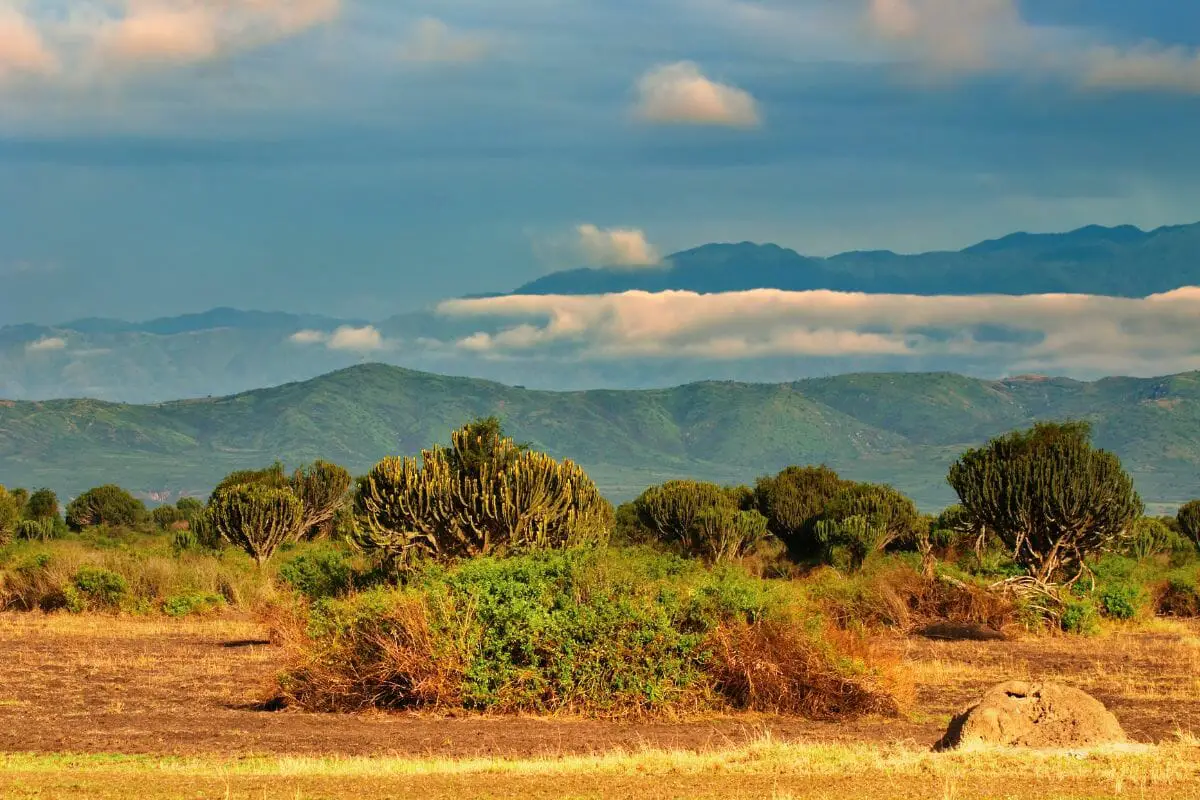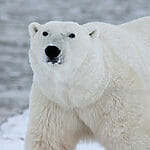The savanna is easily one of the most interesting ecosystems in the world.
It’s one of the few ecosystems classed as a ‘grassy woodland’ as it is characterized by its abundance of trees that are too far apart to make a closed canopy, but the savanna is also well known due to its wide range of fauna.

Many different animals call the savanna their home – but which ones? Let’s dive right in to take a closer look!
Lions
The first animal anyone ever thinks of when they imagine the savanna is the mighty lion!
Lions are not the only big cats that live in the savannas of Africa, but they are the most widely recognized and are used around the world as symbols of regality and ferocity.
However, lions in real life are very lazy. They sleep for around 16 to 20 hours every day with only a few hours of their time dedicated to hunting.
Another interesting fact about lions is that they are the only big cats that live in groups known as ‘prides’.
They are very sociable and most lionesses in particular will live and hunt together, sticking with their mothers, aunts, sisters, and cousins for their entire lives.
Male lions leave their home pride once they come of age and will either go alone or leave with other male relatives to join a bachelor pride.
Plains Zebra
Zebras are some of the most easily recognizable animals in the world due to their fantastic striped coats.
The black and white pattern is unique to every zebra, just like how our fingerprints are unique to us, and they are used as camouflage to help them hide from predators.
Not all zebras are black and white as some can be born with a form of partial albinism which gives their mane and stripes a lighter, ‘blonder’ color – making them stand out even more!
If they are spotted by a predator, then zebras can move pretty fast to get away. They can run at up to 65 kilometers per hour – so they can make a quick getaway whenever they are in danger!
Aardvark
One of the more timid creatures that also live on the savanna is the Aardvark. This burrowing mammal is native to most parts of Africa but can be pretty tricky to find.
They live underground and only hunt at night, when they come out to scavenge for insects such as termites and ants.
What makes aardvarks so interesting is that they are pretty unique creatures biologically.
Although they share some similarities with other animals like elephants and kangaroos, they don’t have any closely related cousins – making them a one of a kind species!
Mound-Building Termites
One of the most abundant insects to live on the savanna is the mound-building termite.
These tiny creatures are capable of building huge structures that can reach the dizzying heights of 17 feet (well, dizzying if you are a termite). These mounds are a form of protection against predators, plus as a place to store food and mate in safety.
There are three different main castes of termites in each colony – the workers who dig tunnels, locate food, and help build and repair their nest.; the soldiers who defend the colony by biting and spreading toxic secretion onto their enemies, and the reproductives known as the king and queen.
Each has its own role to follow until the colony is gone or moves on, leaving behind a mound that remains long after the colony is gone.
Spotted Hyenas
Spotted hyenas get a bad reputation these days but these carnivores are just as important to the food chain as any other predator in the savanna.

They are best known for their scavenging techniques and they’re not afraid to pinch the leftovers from another predator.
However, they are also very skilled hunters and will go out of their own way to hunt down some prey. They also hunt and live in groups known as clans ruled by an alpha female.
Another well known feature of spotted hyenas is their ability to whoop and cackle to one another. Their form of communication sometimes sounds like human laughter and as a result, they have been nicknamed ‘laughing’ hyenas!
Ostrich
The largest species of bird in the world also lives on the savanna. Ostriches are flightless birds that can grow to nearly three meters in height!
This is thanks to their super long legs and necks, which allows them to cover nearly five meters of ground in a single stride. This also makes them fast runners which helps make up for the fact that they cannot fly.
As a result, ostriches will nest on the ground and lay eggs that are around three pounds each, growing to the size of a human hand.
Both the mother and father will take turns incubating the egg and protecting them from predators that will happily tuck into them if found unattended. Jackals, crocodiles, meerkats, and even lions will all eat ostrich eggs!
Meller’s Chameleon
Chameleons are some of the most beloved reptiles out there but not many live outside Madagascar island.
However, the Meller’s chameleon makes it home on the savanna and lives high up in the trees. Its green skin helps it camouflage with the leaves but, like with all chameleons, it can also change its color depending on its stress.
A hugely noticeable feature of the Meller’s chameleon is its horn.
This type of chameleon sports a horn on the front of their snouts, which sets them apart from their chameleon cousins and has earned them the nickname the ‘giant one-horned chameleon’.
Final Thoughts
The savanna is home to a huge range of animals including lots of different types of reptiles, mammals, birds, and more. We have only managed to cover a few in this article and there are still so many more out there to discover and learn.
So, we hope that you have found this article interesting and educational – now, go out there and find out more about the savanna and the animals that call it home!









